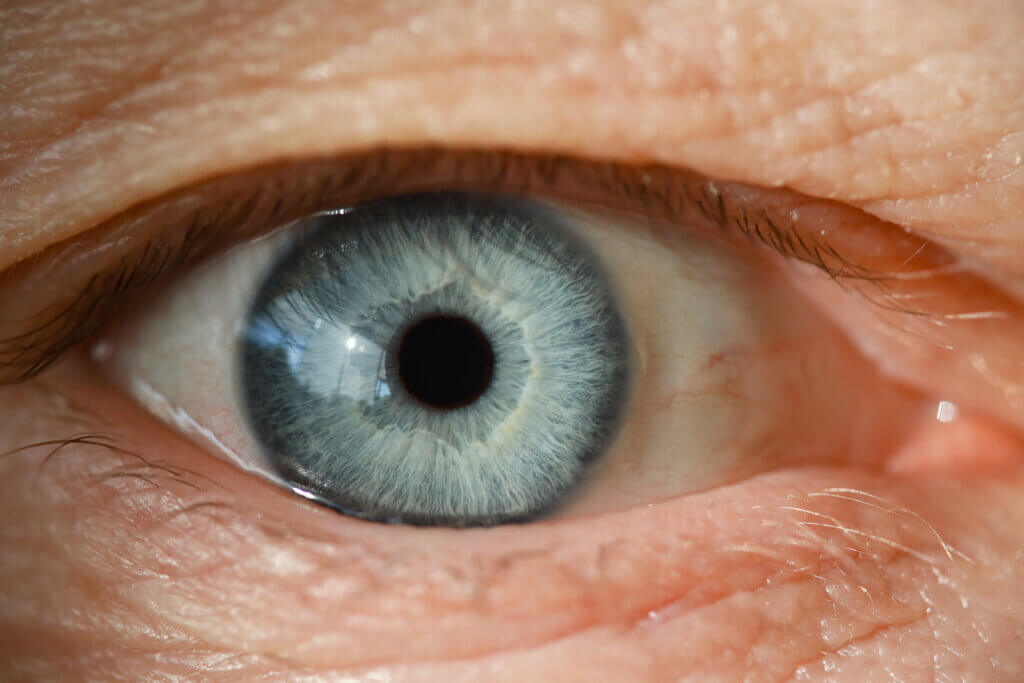Types of Migraine

One of the most common neurological disorders is migraine. It can have a wide variety of clinical manifestations, but the most prevalent is a throbbing headache that can range from moderate to severe. There are several types of migraine, depending on how it affects the body and the accompanying symptoms that appear.
In many types of migraine, there are common symptoms, such as nausea, dizziness and vomiting. However, other manifestations are unique to a particular type. It’s important to learn to distinguish the varieties in order to apply the appropriate treatment.
Migraine without aura
In migraine without aura, or common migraine, the headache is throbbing, usually on one side of the head (unilateral), and appears with nausea, sensitivity to light (photophobia) and sound (phonophobia). Pain tends to be aggravated by routine physical activity.
Migraine with aura
When we use the term migraine with aura, we mean that, before the headache starts, some temporary and reversible symptoms may appear. They’re interpreted as a warning sign of what’s about to happen.
These symptoms are visual disturbances (seeing irregular, bright, or flashing lights, or losing part or all of your vision), tingling sensations in the hands or face, muscle weakness, and difficulties with language. The aura itself usually occurs an hour before the headache and lasts less than 60 minutes, according to experts from the Mayo Clinic

Chronic migraine
According to experts, chronic migraine is the most common type of migraine. It usually causes headaches on 15 or more days of the month, of which at least 8 coincide with the criteria for migraine without aura.
To be diagnosed, this situation must occur at least 3 months in a row, without any clear cause (such as excessive use of some type of medication or any other disorder).
Abdominal migraine
As a study indicates, abdominal migraine is more common in children than in adults. It’s defined by episodes of acute and disabling abdominal pain. However, intervals of weeks or months can pass with almost no sign of it.
Associated signs are headaches, sensitivity to light (photophobia), paleness, anorexia, nausea, and vomiting. In childhood, it represents a diagnostic challenge for professionals.
Silent migraine
Unlike the other types of migraine, in the silent form the characteristic headache doesn’t appear. Many of the other symptoms are present except that one.
It most often affects people over the age of 50 and tends to be confused with a stroke. Vision disturbances (and more specifically those that have to do with color perception) are one of its most common symptoms.
Migraine with brainstem aura
As the neurologists on the My Headache portal explain, migraine with brainstem aura originates in this part of the nervous system, although it isn’t limited to it. It seems to be more common in women and produces visual disturbances, as well as vertigo.
Among other manifestations we find the following:
- Headaches originating in the neck (occipital headache)
- Decreased or increased sensitivity (dysesthesia)
- Difficulty articulating words (dysarthria)
- Disturbance of movements (ataxia)
- Noises in the ears that do not have an external sound source (tinnitus)
Familial or sporadic hemiplegic migraine
As the Rare Diseases and Orphan Drug Information Portal (Orphanet) indicates, familial hemiplegic migraine is a rare variety. It’s characterized by causing motor weakness during the aura.
Retinal migraine
Unlike other types of migraine that can affect both eyes, in retinal migraine only one eye is affected by visual disturbances. It’s a rare type of migraine. As for the symptoms, they’re the same as in the common form.

Migraine state
As stated in a recent update on the topic, migraine status (sometimes also called migrainous status) is a migraine attack that involves a severe and debilitating pain phase that lasts more than 72 hours. Instead, if the attack persists 72 hours or more and isn’t debilitating, it can be categorized as a possible migraine without aura.
Why is it important to distinguish the type of migraine?
If you suffer from severe headaches and other discomforts that are compatible with any of the types of migraine, don’t hesitate to see your doctor for a check-up. Once in consultation, keep in mind that it’s important to explain your symptoms clearly in order for the doctor to be able to reach the correct diagnosis.
One of the most common neurological disorders is migraine. It can have a wide variety of clinical manifestations, but the most prevalent is a throbbing headache that can range from moderate to severe. There are several types of migraine, depending on how it affects the body and the accompanying symptoms that appear.
In many types of migraine, there are common symptoms, such as nausea, dizziness and vomiting. However, other manifestations are unique to a particular type. It’s important to learn to distinguish the varieties in order to apply the appropriate treatment.
Migraine without aura
In migraine without aura, or common migraine, the headache is throbbing, usually on one side of the head (unilateral), and appears with nausea, sensitivity to light (photophobia) and sound (phonophobia). Pain tends to be aggravated by routine physical activity.
Migraine with aura
When we use the term migraine with aura, we mean that, before the headache starts, some temporary and reversible symptoms may appear. They’re interpreted as a warning sign of what’s about to happen.
These symptoms are visual disturbances (seeing irregular, bright, or flashing lights, or losing part or all of your vision), tingling sensations in the hands or face, muscle weakness, and difficulties with language. The aura itself usually occurs an hour before the headache and lasts less than 60 minutes, according to experts from the Mayo Clinic

Chronic migraine
According to experts, chronic migraine is the most common type of migraine. It usually causes headaches on 15 or more days of the month, of which at least 8 coincide with the criteria for migraine without aura.
To be diagnosed, this situation must occur at least 3 months in a row, without any clear cause (such as excessive use of some type of medication or any other disorder).
Abdominal migraine
As a study indicates, abdominal migraine is more common in children than in adults. It’s defined by episodes of acute and disabling abdominal pain. However, intervals of weeks or months can pass with almost no sign of it.
Associated signs are headaches, sensitivity to light (photophobia), paleness, anorexia, nausea, and vomiting. In childhood, it represents a diagnostic challenge for professionals.
Silent migraine
Unlike the other types of migraine, in the silent form the characteristic headache doesn’t appear. Many of the other symptoms are present except that one.
It most often affects people over the age of 50 and tends to be confused with a stroke. Vision disturbances (and more specifically those that have to do with color perception) are one of its most common symptoms.
Migraine with brainstem aura
As the neurologists on the My Headache portal explain, migraine with brainstem aura originates in this part of the nervous system, although it isn’t limited to it. It seems to be more common in women and produces visual disturbances, as well as vertigo.
Among other manifestations we find the following:
- Headaches originating in the neck (occipital headache)
- Decreased or increased sensitivity (dysesthesia)
- Difficulty articulating words (dysarthria)
- Disturbance of movements (ataxia)
- Noises in the ears that do not have an external sound source (tinnitus)
Familial or sporadic hemiplegic migraine
As the Rare Diseases and Orphan Drug Information Portal (Orphanet) indicates, familial hemiplegic migraine is a rare variety. It’s characterized by causing motor weakness during the aura.
Retinal migraine
Unlike other types of migraine that can affect both eyes, in retinal migraine only one eye is affected by visual disturbances. It’s a rare type of migraine. As for the symptoms, they’re the same as in the common form.

Migraine state
As stated in a recent update on the topic, migraine status (sometimes also called migrainous status) is a migraine attack that involves a severe and debilitating pain phase that lasts more than 72 hours. Instead, if the attack persists 72 hours or more and isn’t debilitating, it can be categorized as a possible migraine without aura.
Why is it important to distinguish the type of migraine?
If you suffer from severe headaches and other discomforts that are compatible with any of the types of migraine, don’t hesitate to see your doctor for a check-up. Once in consultation, keep in mind that it’s important to explain your symptoms clearly in order for the doctor to be able to reach the correct diagnosis.
- Buonanotte CF, Buonanotte MC. Migraña. Neurol Argentina [Internet]. 2013 [cited 2021 Jun 27];5(2):94–100. Available from: https://www.elsevier.es/es-revista-neurologia-argentina-301-articulo-migrana-S1853002812001541
- Hawa Kathryn, Gupta Shivani, Saps Miguel. Migraña Abdominal: Variaciones en el diagnóstico y tratamiento entre gastroenterólogos y neurólogos pediatras. Rev. chil. pediatr. [Internet]. 2020 Feb [citado 2021 Jun 27] ; 91( 1 ): 46-50. Disponible en: http://www.scielo.cl/scielo.php?script=sci_arttext&pid=S0370-41062020000100046&lng=es. Epub 02-Feb-2020. http://dx.doi.org/10.32641/rchped.v91i1.1250.
- Pascual J. Guía de recomendaciones para el diagnóstico y tratamiento de la migraña en la práctica clínica [Internet]. [cited 2021 Jun 27]. Available from: https://www.semg.es/doc/documentos_SEMG/consenso_migrana.pdf
- Silberstein SD. Migraña – Trastornos neurológicos [Internet]. Manual MSD versión para profesionales. [cited 2021 Jun 27]. Available from: https://www.msdmanuals.com/es/professional/trastornos-neurológicos/cefalea/migraña
- Takeuchi Y. Actualización en migraña Actualización en migraña | Update on migraine headache. Acta Neurol Colomb [Internet]. 2008 Sep [cited 2021 Jun 27];24(3). Available from: https://www.acnweb.org/acta/2008_24_S3_44.pdf
- Tan Yuri Takeuchi, Uribe García Bernardo. El paciente con estado migrañoso en urgencias. Acta Neurol Colomb. [Internet]. 2020 Dec [cited 2021 June 27] ; 36( 4 Suppl 1 ): 1-5. Available from: http://www.scielo.org.co/scielo.php?script=sci_arttext&pid=S0120-87482020000600001&lng=en. Epub May 13, 2021. https://doi.org/10.22379/24224022308.
Este texto se ofrece únicamente con propósitos informativos y no reemplaza la consulta con un profesional. Ante dudas, consulta a tu especialista.







